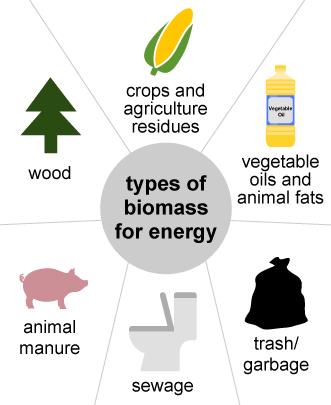Did you know that biofuels make up around 4% of total transportation fuel demand worldwide?
Derived from organic materials, this renewable energy source plays an important role in decarbonizing transport by providing a low-carbon solution for existing technologies. Beyond that, biofuels turn food waste that would otherwise go to landfills into a valuable resource, helping drive a more circular economy.
With the U.S. leading the way as the world’s largest biofuel producer in 2024, companies are increasingly curious about biofuels’ advantages and disadvantages.
Keep reading for insight into the pros and cons of biofuels from a business perspective—and what to consider before adopting this approach.
Key Takeaways
- Replacing fossil fuels with biofuels increases business energy efficiency, thereby reducing greenhouse gas emissions, resource depletion, and dependence on unstable foreign suppliers.
- Converting food waste to energy reduces landfill waste, supports a circular economy, and helps your company achieve its zero-waste-to-landfill goals by repurposing valuable organic materials.
- Producing biofuels demands substantial investment in feedstock and infrastructure, which can make the high upfront costs a barrier for companies considering this solution.
- To minimize the negative impacts of biofuels, businesses can partner with experienced waste management experts like Shapiro who promote sustainability through strict compliance and responsible waste collection, transportation, and recycling practices.
Types of Biofuels
Before we discuss biofuels’ advantages and disadvantages, let’s take a look at the different types of biofuels your company should know about.
Primary vs. Secondary Biofuels
What’s the difference between primary and secondary biofuels?
Here’s a quick breakdown:
- Primary: Primary biofuels are used in their natural or unprocessed form. A great example of this is wood pellets, which can be used for heating, cooking, or electricity generation.
- Secondary: Secondary biofuels convert the original biomass into a different form, creating fuels like ethanol and syngas. This type of biofuel can be used for vehicle fuel or other industrial purposes.
Generations of Biofuels
Generation biofuels refer to the categorization of biofuels based on the raw materials used and the complexity of the production processes involved.

Here’s an overview of the four generations:
- First-generation: First-generation biofuels are made from agricultural crops, such as corn, wheat, sugarcane, and food grain, and are primarily used to make ethanol and biodiesel.
- Second-generation: Second-generation biofuels derive from agricultural byproducts and non-food biomass, such as energy crops and forestry waste.
- Third-generation: Third-generation biofuels are made from marine organisms like algae, which commonly produce alcohols and lipids for biofuel production.
- Fourth-generation: Fourth-generation biofuels use genetic engineering to enhance organisms for better biofuel production, offering higher overall efficiency.
How Businesses Use Biofuels for Energy Efficiency
Renewable energy for businesses plays a key role in helping industries transition to cleaner, more efficient power sources for transportation and industrial processes.
1. Transportation and Fleet Operations
Most biofuels are used as transportation fuels, with U.S. biofuel production and consumption increasing each year since the early 1980s due to government policies and programs that promote alternatives to fossil fuel–based transportation.
Biofuel production often depends on the quality and availability of feedstock for biofuel, which directly influences efficiency and sustainability.
Ethanol and biodiesel are the most common biofuels on the market today, offering a cleaner way to meet transportation fuel needs.
Ethanol is an alcohol used as a blending agent with gasoline, with the most common blend being 10% ethanol with 90% gasoline. Biodiesel, on the other hand, fuels diesel engines and can be blended with petroleum diesel in any percentage; the most common blend contains 20% biodiesel and 80% petroleum diesel.
ScienceDirect provides insight into this, stating that: “Increased oil prices make biofuels more economically competitive, resulting in similar levels of transportation emission reduction. Overall, biofuels could play a significant role in the national transportation sector under improved government incentives, increased oil prices, higher biomass availability, or technological advancement.”
2. Industrial and Power Generation
Biofuels can also be used for industrial applications, providing a sustainable alternative to traditional energy sources. One way to achieve this is through biogas digesters—airtight, enclosed containers where microorganisms produce biogas from food waste.
As stated by the Environmental and Energy Study Institute, “Biogas can be used for combined heat and power (CHP) operations, or biogas can simply be turned into electricity using a combustion engine, fuel cell, or gas turbine, with the resulting electricity being used on-site or sold onto the electric grid.”
A great example of how biogas can be produced on a large scale is the Linden Renewable Energy Project, which is set to be the nation’s largest food waste-to-biogas facility once completed.
At Shapiro, we’re part of a network of industry leaders contributing feedstock to this project. If your business generates food, beverage, or industrial waste within 200 miles of Linden, NJ, we’ll collect and transport it so your company can minimize its environmental impact. Contact us for details.
Biofuel Advantages
Biofuel sustainability plays a key role in driving cleaner energy solutions, offering multiple advantages for both the environment and companies.
1. Renewable and Sustainable Energy Source
Replacing fossil fuels with biofuels increases business energy efficiency, thereby reducing greenhouse gas emissions, resource depletion, and dependence on unstable foreign suppliers.
As a result, this transition helps companies meet ESG standards, achieve sustainability targets, and connect with environmentally conscious consumers.
2. Waste Reduction and Circular Economy Integration
A huge benefit of converting food waste to energy is that it reduces landfill waste and methane emissions while supporting a circular economy. This approach also plays a vital role in achieving your company’s zero waste to landfill goal by ensuring that valuable organic materials are repurposed rather than discarded.
3. Energy Security and Economic Opportunity
There are many advantages of biogas, including its contribution to a more diversified and resilient energy grid and its potential to lower energy costs. Similarly, converting biomass to energy transforms organic materials into a reliable power source, creating local jobs and improving supply resilience in the process.

Biofuel Disadvantages
Now, we have to discuss the renewable energy challenges to get a complete picture of biofuels’ advantages and disadvantages.
1. High Production and Transition Costs
Biofuel production requires significant investment in feedstock and infrastructure. This high initial cost can discourage companies from adopting this solution.
That said, companies like Shapiro assist with waste management by providing structured transportation and infrastructure support, making the transition to biofuel production more feasible and efficient.
2. Land and Resource Competition
Crop-based biofuels can contribute to deforestation and other harmful land conversions. However, when biomass waste products are used instead, it helps address the food-vs-fuel issue and reduces the potential impact on biodiversity.
3. Energy Efficiency and Performance Limits
When evaluating biofuel and biomass pros and cons, one challenge lies in their generally lower energy density compared to conventional fuels. The type of biomass used also influences energy output and performance, as variations in composition and moisture content can affect overall efficiency.
4. Policy and Market Volatility
Biofuel markets are often dependent on government subsidies and the stability of carbon credit systems. Many countries use a range of policy instruments to encourage biofuel production and consumption; the removal of tariffs and subsidies could cause global ethanol production and consumption to decline by approximately 10–15%.
5. Environmental Impact Considerations
As stated by the EPA, “Biofuel production and use has drawbacks as well, including land and water resource requirements, air and ground water pollution. Depending on the feedstock and production process, biofuels can emit even more GHGs than some fossil fuels on an energy -equivalent basis.”
To reduce the negative impacts of biofuels, businesses should collaborate with an experienced waste management partner. At Shapiro, we adhere to strict compliance protocols to ensure sustainability throughout every stage of transportation and recycling.
Comparison: Biofuels vs. Fossil Fuels vs. Electrification
So how do biofuels stack up against alternatives?
Check out this graph comparing biofuels with fossil fuels and electrification.
| Criteria | Biofuels | Fossil Fuels | Electrification |
|---|---|---|---|
| Carbon Emissions | Lower, can be near carbon-neutral | Highest emissions | High potential to decarbonize energy supply chains |
| Cost Stability | Fluctuates with feedstock and subsidies | Volatile; tied to global markets | Increasingly stable |
| Scalability | Limited by land, resources, and infrastructure | Highly scalable, existing infrastructure | Dependent on overcoming challenges like grid constraints |
| Waste Integration | Uses organic waste effectively | None | Limited but improving |
What Businesses Should Consider Before Adopting Biofuels
Interested in biofuel sustainability?
Consider these last few details to ensure your strategy aligns with long-term business efficiency.
1. Assess Lifecycle Emissions
Evaluating lifecycle emissions helps determine whether biofuels deliver a true net carbon benefit compared to conventional fuels. This involves analyzing emissions across production, transportation, and end use to ensure sustainability claims hold up under scrutiny.
2. Review Feedstock Reliability
Reliable feedstock sourcing is essential for consistent biofuel production and long-term scalability. Companies should prioritize sustainable and locally available materials to minimize environmental impact and supply risks.
3. Analyze ROI and Payback Period
What’s your expected ROI?
Assessing return on investment and payback periods helps businesses understand both the economic and regulatory advantages of adopting biofuels. Explore the benefits of biochar to discover additional ways to improve cost efficiency and carbon performance.
4. Align with Corporate Sustainability Goals
Integrating biofuel adoption with corporate sustainability goals ensures alignment with broader zero-waste and carbon-reduction strategies. This approach helps companies strengthen their environmental credibility while maintaining regulatory compliance.
5. Partner with Expert Consultants
Collaborating with industry experts simplifies the transition to renewable energy for businesses. At Shapiro, our biochar solutions support companies through every stage of the recycling process, helping them achieve greater business energy efficiency.
Biofuels in Zero-Waste Energy Transformation
Biofuels are central to zero-waste energy transformation, converting organic materials into renewable fuel that enhances waste-to-energy systems and supports circular economy goals.
By integrating biofuel production with waste diversion, businesses can close the resource loop through energy recovery and waste valorization. This aligns with Shapiro’s approach to sustainable consulting, helping companies turn waste into opportunity while adapting to future food waste trends.
Conclusion
When it comes to biofuels advantages and disadvantages, the benefits are clear: lower emissions, renewable fuel sources, and support for circular energy systems.
However, challenges like cost and scalability continue to shape how businesses approach biofuel adoption.
With our services, we help bridge the gap, guiding companies in integrating biofuels into broader zero-waste and renewable energy strategies. We’ll work closely with you to create a tailored plan that addresses your operational goals, sustainability targets, and long-term energy efficiency needs.
Contact us to learn more about our waste management services.
FAQs about Biofuels Advantages and Disadvantages
The pros of biofuels include a sustainable energy source, waste reduction, support for the circular economy, and improved energy security, while the cons involve high production costs, land use challenges, policy volatility, and the potential biofuel impact on the environment.
Industries like transportation, aviation, agriculture, and manufacturing benefit most from biofuels.
Companies can integrate biofuels responsibly by sourcing sustainable feedstocks, assessing lifecycle emissions, partnering with experienced waste management providers, and aligning their energy strategies with broader zero-waste and decarbonization goals.
Second-generation biofuels derive from agricultural byproducts and non-food biomass, such as energy crops and forestry waste. The goal of second-generation biofuel processes is to extend the amount of biofuel that can be produced sustainably by using biomass.
Baily Ramsey, an accomplished marketing specialist, brings a unique blend of anthropological insight and marketing finesse to the digital landscape. Specializing in educational content creation, she creates content for various industries, with a particular interest in environmental initiatives.



